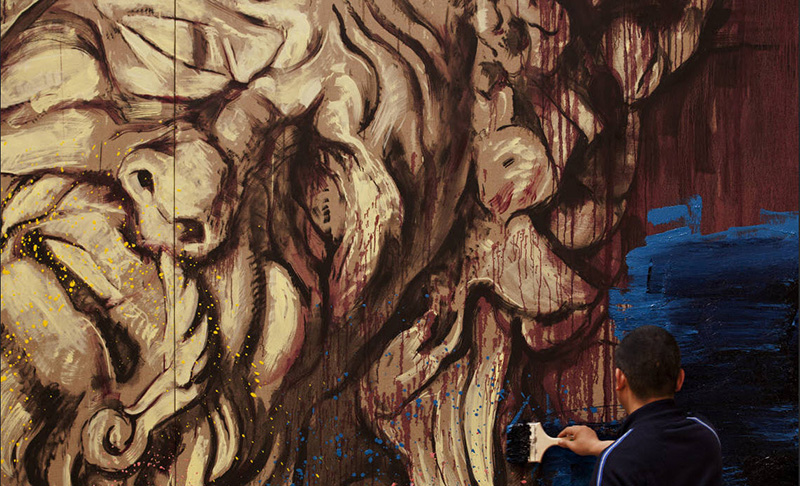ART-PRESENTATION: Zeng Fanzhi-Parcours
 Zeng Fanzhi is at the forefront of a generation of Chinese artists who have achieved national and international prominence in the wake of the Cultural Revolution of the ‘70s. Over the past three decades he has probed the place of the unconscious in the construction of human experience while reflecting on the collective national psyche in the face of broad and accelerated change.
Zeng Fanzhi is at the forefront of a generation of Chinese artists who have achieved national and international prominence in the wake of the Cultural Revolution of the ‘70s. Over the past three decades he has probed the place of the unconscious in the construction of human experience while reflecting on the collective national psyche in the face of broad and accelerated change.
By Dimitris Lempesis
Photo: UCCA Archive
The exhibition “Parcours” at Ullens Center for Contemporary Art (UCCA) in Beijing, is Zeng Fanzhi’s largest and most comprehensive to date and offers a walk through, among, around, and beyond these diverse yet complementary bodies of work. Following Zeng’s oeuvre, it moves seamlessly from early experiments in realism that began while he was still a student in the late ‘80s, through a series of muted, masked in the mid ‘90s, onward to the strikingly colored, tensely vibrating, monumentally scaled canvases that signal his international emergence after 2000, and arriving at the antiquarian serenity of rigorously perceptive works on paper of his own making in the current decade. The exhibition is designed by the artist’s longtime collaborators Tadao Ando Architect& Associates, with 60 works borrowed from Collections around the world, it covers the nearly 30 years of Zeng’s creative output, winding through his extensive stylistic and thematic evolutions on canvas and in sculptural form. The main body of the exhibition in UCCA’s Great Hall features key works from each major series in Zeng’s career, presenting a complete picture of his creative exploration and artistic contribution, and referring to art-historical precedents from Hellenistic sculpture to Lucian Freud. It culminates in a room dedicated to a recent series of works on paper which mark a new engagement with the aesthetics of Chinese painting, and in the Nave, where a special space has been constructed to show two of his most ambitious landscapes. With time, Zeng has tempered the direct impact of Western Expressionism with the local influence of traditional painting methods. After the nightmarish “HospitaL” paintings came the visceral “Meat” paintings that juxtapose figures with butchered flesh; then the enigmatic “Mask” paintings that treated social alienation. Recent paintings include large-scale nocturnal landscapes, some populated by anonymous figures or identifiable historical subjects; and smaller, more abstract canvases in which schematic black branches stand out in sharp relief against backgrounds of sweeping horizontal brushstrokes. In the landscape paintings, traditional techniques blend seamlessly with modern abstraction. The “Abstract Landscape” paintings evolve as if autonomously through the rhythmic processual vitality with which Zeng approaches his persistent motifs. Other paintings juxtapose carefully adapted art-historical subjects with spontaneous brushwork, oscillating between a meticulous cut-and-paste sensibility and gestural mark-making. An exacting close-up of “Laocoön’s head”, is cast against a mercurial, nebulous sky.
Info: Curators: Philip Tinari and Guo Xi, llens Center for Contemporary Art (UCCA), 798 Art District, No. 4 Jiuxianqiao Lu, Chaoyang District, Beijing, Duration: 19/9-19/11/16, Days & Hours: Mon-Sun 10:00-19:00, http://ucca.org.cn

